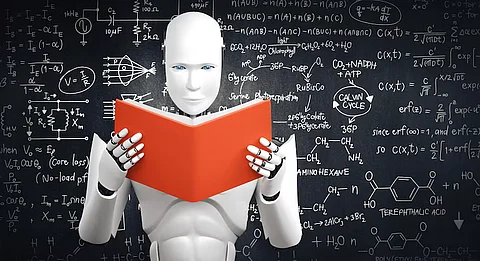

AI is changing education by helping students learn in their own way, offering help anytime, saving teachers time, spotting students who need support, making lessons fun, and working alongside teachers—not replacing them.
Classrooms are changing fast. Not just with smartboards or online homework, but in much bigger ways. Artificial Intelligence, or AI, is entering schools and colleges, changing how students learn and how teachers teach. Teachers still lead the class, but AI is starting to play a bigger role. These six trends show how technology is transforming education and why both teachers and students should pay attention.
Certain students pick up math easily but require additional assistance with reading. Others may excel in science but have difficulty with history. AI-based learning systems such as Knewton or Duolingo adapt to the way each student learns. If a topic is difficult, the system slows down and provides additional practice. If it's simple, it accelerates faster.
Why it's important: With 40 students in a class, it’s hard for a teacher to give every student a personalized lesson. AI helps by offering learning paths that match each student’s pace and style.
Study sessions late at night tend to have questions that don't wait. AI chatbots and tutors are designed to answer such questions at any time. Programs such as Khanmigo, developed by Khan Academy, break down concepts step by step, just as a human tutor would. They're 24/7 and accessible on phones or laptops.
Why it's important: Students don't have to wait for the next session or spend money on costly tutors. These AI applications are free or inexpensive and readily accessible.
It takes a long time to grade tests and essays. AI applications such as Gradescope can now scan answer sheets and even check long form answers. Some of them are becoming adept at checking grammar, structure, and logic.
Why it matters: This saves time for instructors and provides students with quicker feedback. But it also leads to questions. Can a machine know creative writing or a closely reasoned opinion? Not yet. That's still work for teachers.
AI can monitor patterns of attendance, quiz grades, or the number of times students log into class sites. With this, it can identify students who may be falling behind. Schools such as Georgia State University in the US already do this to intervene early and provide help.
Why it matters: Some students struggle quietly and don’t ask for help. AI tools help teachers notice problems early, so fewer students fail or drop out.
Thanks to AI and tools like virtual and augmented reality, learning doesn’t always mean reading from a book. Students can explore the human body in 3D, walk through ancient cities, or do science experiments without being in a real lab. These tools adjust based on each student's level.
Why it matters: This type of learning is more fun and easier to remember. It also helps with tough subjects that can be hard to understand through reading alone.
AI can describe the process of photosynthesis, but it can't console a student who's having a bad day. It can mark an essay, but it can't motivate a class with a compelling anecdote. Teachers do more than simply impart lessons. They guide, nurture, and relate to students in ways that machines can't.
Why it matters: Even the most intelligent AI can't replace a teacher. Technology can assist, but learning still requires human touch.
AI is transforming education—from day-to-day lessons to master planning. AI assists students to learn more and provides teachers with helpful tools. But that's not to suggest robots will lead classrooms. That's to say teaching is transforming. Less paper work. More time to teach, mentor, and support. Learning's future isn't man vs. machine. It's man and machine in partnership, making education smarter, faster, more personal.
